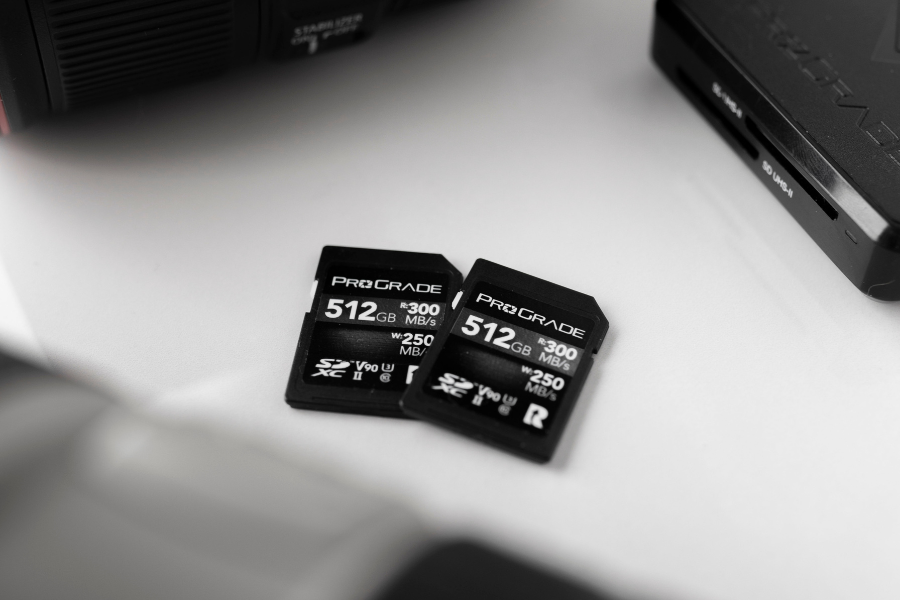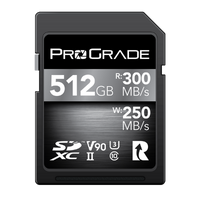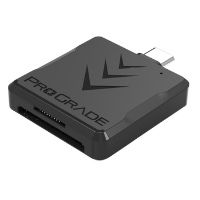As a photographer, your memory card is your lifeline; you depend on it to store and protect your images. However, with so many types of memory cards available in the market, it’s easy to fall prey to myths and misconceptions about them. In this blog post, we’ll debunk the 9 most common myths about memory cards, so you can make informed decisions when it comes to selecting and using them for your photography needs. Whether you’re a beginner or a seasoned pro, this post will provide valuable insights on avoiding costly mistakes and protecting your precious images. So, let’s bust some myths and set the record straight!
Myth #1: Bigger capacity means faster speed
Many believe that a memory card with a larger capacity automatically has faster read and write speeds. This could not be further from the truth. The memory card’s capacity has nothing to do with its speed.
This myth may originate from the early days of solid-state drives (SSDs) when some manufacturers used faster components on their bigger drives.
The speed of a memory card is primarily determined by its speed class rating, which indicates the minimum write speed of the card. So, if both memory cards have the same speed class rating, the larger capacity card will not be faster. However, it’s important to note that larger-capacity memory cards may have faster write speeds than smaller-capacity cards if you compare cards manufactured by different companies. This brings us to the second myth.
Myth #2: Two memory cards with the same speed class rating are equally fast
As mentioned before, speed class ratings are an important indicator of a memory card’s speed. However, they only indicate the minimum sustained write speed of the card, not its maximum speed. This means that a V90 SDXC card from one brand may perform differently from a V90 SDXC card from another brand. For example, the ProGrade Digital SDXC V90 memory cards have a maximum write speed of 250 MB/s.
In short, speed class ratings are just certification standards to ensure that the memory card we use can meet our devices’ minimum speed requirements.
memory card speed is determined by multiple factors, including the card’s interface (e.g., UHS-I or UHS-II), bus speed, and controller technology. For example, a UHS-I card and a UHS-II card may have the same speed class rating, but a UHS-II card will generally be faster than a UHS-I card.
Myth #3: Memory card speed does not REALLY matter
Many assume memory card speed is only essential when transferring files to your computer. The widespread belief is that if you are not a working professional who needs to move a large number of photos daily fast, you don’t need a fast memory card.
The truth is that memory card speed does matter, especially if you are shooting in burst mode or recording high-quality video. Slower cards may cause your camera to slow down or even stop shooting altogether when bursting, and they cannot handle the demands of high-resolution and high-bitrate video recording, resulting in dropped frames or corrupted footage. Not to mention, some high-quality shooting modes are only available when a faster memory card is used.
Myth #4: Cheap memory cards are just as good as expensive ones
Another common myth about memory cards is that cheap cards are just as good as expensive ones. While it may be tempting to choose a cheaper card, especially if you are on a budget, the truth is that cheaper cards may not offer the same level of performance, reliability, and durability as more expensive cards.
Cheaper cards may be made with lower-quality materials, have slower read and write speeds, and may be more prone to failure or corruption. This can be especially problematic if you store important or irreplaceable images or videos on your memory card.
In contrast, more expensive cards often offer faster read and write speeds, higher bitrates, better build quality, and more advanced features. These features can be necessary if you shoot in challenging environments, such as in wet or dusty conditions or extreme temperatures.
Myth #5: Formatting a memory card in a camera will erase all data permanently
Not saying that you should ease off when it comes to data management, but formatting a card in the camera will not mean the data is permanently lost.
Formatting a memory card in a camera (quick format) does not necessarily mean that the data is gone forever! When you perform a quick format, it only clears the File Allocation Table (FAT) but leaves the actual data untouched. So, you can still recover your precious photos or videos using data recovery software, as long as they haven’t been overwritten by new data. However, be cautious – a full format (offered in some newer camera models) erases the data more thoroughly, making it nearly impossible to recover! Always double-check the formatting option you’re choosing and backup your important memories.
Myth #6: Memory cards have a short lifespan
While it is true that all electronic devices have a limited lifespan, memory cards are actually quite durable and can last for many years with proper care and use.
Memory cards have a lifespan because of the way they store and erase data. Memory cards use a type of flash memory called NAND, which has a limited number of write/erase cycles. Each time data is written to or erased from a memory card, it uses up these write/erase cycles, eventually leading to the degradation of the memory cells.
That said, the lifespan of a memory card largely depends on its quality, usage, and storage conditions. Higher-quality cards that are well-made and designed for professional use can last for a long time, even with heavy usage.
For example, ProGrade Digital memory cards, built for professional photographers and cinematographers, can handle tens of thousands of these write/erase cycles. To put that into perspective, if you fill the card once a day and wipe it clean after, then 10,000 cycles alone give you 13+ years. That rugged build quality is also why all ProGrade cards come with a 3-year warranty by default. Instead of 1 year, which tends to be the industry standard.
However, how you use and store your memory cards can affect their lifespan, which takes us to myth #7.
Myth #7: Memory cards do not need maintenance
Even though high-quality memory cards are shockproof and can handle demanding conditions, it does not mean that they do not require any maintenance.
Memory cards slow down over time. It happens because they get fragmented as we use them.
In short, you may think you put the card through one cycle as you fill it up during the shoot, but in reality, if your memory card is heavily fragmented, parts of the card will go through multiple cycles. It happens because of the data reallocation that takes place automatically in the background to make space for incoming data. That significantly shortens the lifespan of a memory card. It also makes the card perform slower, as it literally multitasks while you shoot.
Regularly formatting your memory card in your computer helps prolong its lifespan and improves its performance by eliminating the need to move around already stored data.
We wrote an article about maintaining your memory card and increasing its lifespan. Go check it out. It’s also an exciting peek into how NAND flash memory works and a one-of-a-kind memory card maintenance tool Refresh Pro. Refresh Pro sanitizes your memory cards in seconds and puts them back in factory-fresh condition, performing like new.
Myth #8: Magnets pose a danger to memory cards
Exposure to a very strong magnetic field can potentially cause damage to the electronic components of a memory card, including the controller and the memory cells themselves. This is because a very strong magnetic field can induce electrical currents in the conductive traces of the device, which can cause them to heat up and damage the surrounding components.
However, the emphasis here is on the words very strong. You would need a powerful magnetic field to disrupt the electric fields on the chip and erase data from a memory card using a magnet, much stronger than what you would find in household magnets. In fact, you would need a magnet with a strength of at least 1-2 tesla (10,000-20,000 gauss) to even have any chance of erasing data from a memory card. To put that in perspective, a typical refrigerator magnet has a strength of only about 0.01 tesla (100 gauss).
Magnets are generally unable to affect flash memory like they can affect magnetic storage media, such as hard drives and floppy disks because flash memory does not use magnetic fields to store data. Instead, flash memory stores data using electrical charges. As a result, flash memory is not affected by magnetic fields in the same way that magnetic storage media are.
That said, even though it is doubtful you will cause any damage, you are probably better off keeping your memory cards away from laboratory-grade equipment using powerful magnets, like MRI machines or cryogenic cooling devices. Unless, of course, you are conducting a science experiment. In which case, have at it, and let us know how it went.
Myth #9: All memory cards with the same form factor are the same
It is natural to think all memory cards with the same form factor are created equal. However, in reality, different memory cards are designed for different applications and devices. Therefore, it’s essential to choose the right card for your needs based on your device’s requirements. For example, some memory cards are optimized for high-speed data transfer, while others are designed for long-term storage.
Conclusion and Final Thoughts
We hope this post has helped dispel some of the most common myths and misconceptions about memory cards and has provided valuable insights into selecting and using these critical tools for your photography and data storage needs. So don’t let these myths misguide you and endanger your images – go out there and capture your next great shot with confidence!





